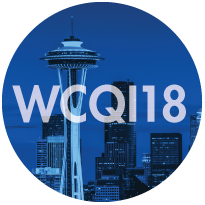ASQ Statistics Division Webinar of Interest
Steve Schuelka informed me of a Statistics Division webinar on calibration reports that I thought would be of interest to our members. It will be held on February 15, at 12:00 CDT. You can register here: https://asq.webex.com/weblink/register/r6e458f4ce95017536ce98648e0e422d2
How to interpret a statement of conformance in a calibration report
By Dilip Shah – E = mc3 Solutions
When a calibration report is provided by a calibration supplier, a typical concern for the customer is to know if the item calibrated is within the tolerance specified so it can used without delay. While this traditional approach is still thought to be fine over the years, measurement science has evolved where it is not a simple binary issue of a “pass” or “fail” status to manufacturer’s specification.
Laboratory accreditation to ISO/IEC 17025 has advanced the good practices related to calibration to include more information to the process of calibrating an item and calling it within conformance (“pass” or “fail”).
This presentation describes what is involved in making statements of conformity. What was traditionally the job of a calibration laboratory (the “experts”) to make a call (“pass” or “fail”) now requires interaction up front from the customer before they can make that call on a calibration certificate. The contract review phase becomes more important in specifying the calibration requirements by the customer.
This presentation educates both the consumer and supplier of calibration services on what is required of them to ensure that an “appropriate” pass or fail call is made to meet the requirements of the customer when a calibration activity takes place.
The learning objectives of this presentation are:
- Understanding the decision rules for conformance
- Specifying the conformance requirements by the customer.
- How measurement uncertainty impacts a decision rule.
- How a statement of conformity should be reported.
- Understanding the conformance decision and minimizing the risk for a safer use of the calibrated item with confidence.
Expected outcome after attending the presentation:
- Specifying exact calibration requirements including decision rules by the customer.
- Better understanding of customer requirements.
- Better Reporting of the calibration results by the supplier after implementing the decision rule(s).
- Less misinterpretation of customer requirements.
- Better understanding of risk mitigation.
Dilip Shah Biography

Dilip A. Shah has over 45 years of industry experience in metrology, electronics, instrumentation, measurement and computer applications of statistics in the Quality Assurance areas. He has been employed in various positions with Philips Electronics (UK), Kodak Ltd. (UK), Instruments Division of Monsanto Corporation, Flexsys America and Alpha Technologies. He is currently a Principal of E = mc3 Solutions, a consulting practice that provides training, consulting and auditing solutions in ISO/IEC 17025, Measurement Uncertainty and its computer applications.
Dilip is the co-author of The Metrology Handbook (1st and 2nd editions) published by the ASQ Quality Press. Dilip is an A2LA Workplace Training (AWPT) trainer and conducts various workshops related to measurement uncertainty and ISO/IEC 17025 related topics.
Dilip is an ASQ Fellow and certified by American Society for Quality (ASQ) as a Certified Quality Auditor, Certified Quality Engineer and Certified Calibration Technician.




